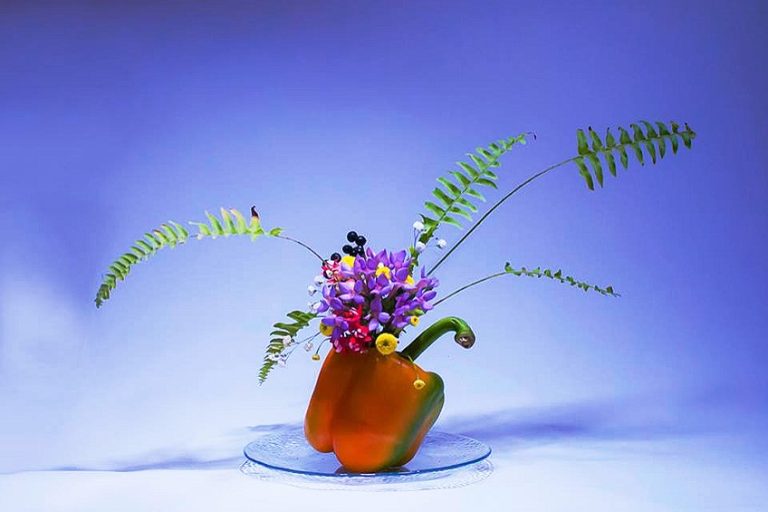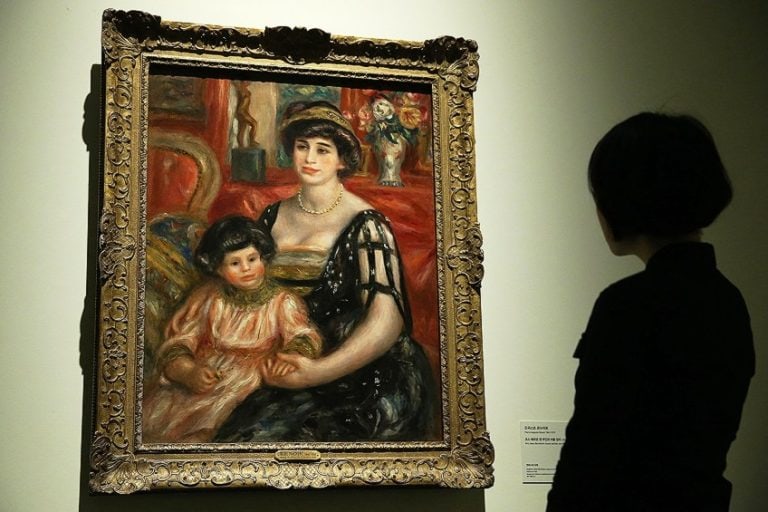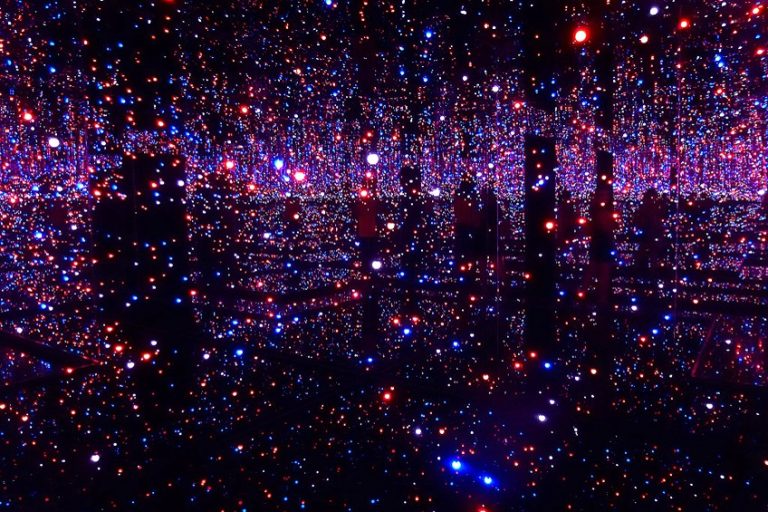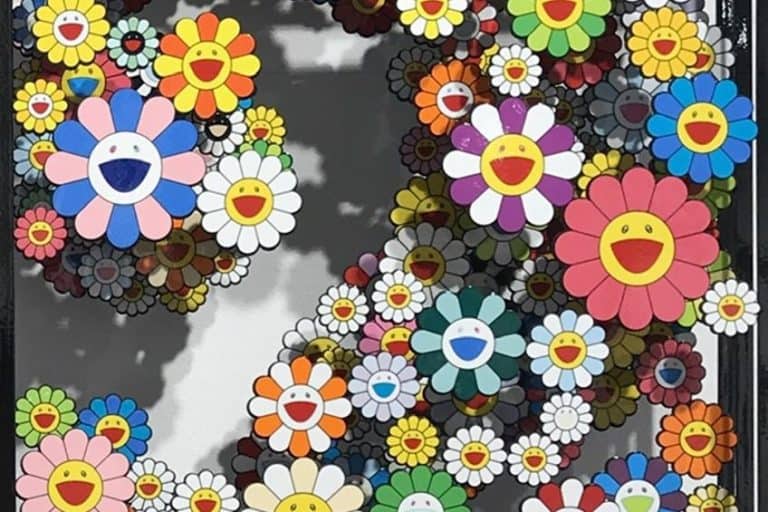Gutai Art Association – Avant-Garde Japanese Creatives
The Gutai Art Association, founded in Japan in 1954, stands as a pioneering force in the realm of avant-garde art. Led by the visionary Jirō Yoshihara, Gutai artists sought to redefine the boundaries of artistic expression through innovative techniques and a profound commitment to the ethos of “concreteness.” Embracing a wide array of mediums, from painting and sculpture to performance and installation, Gutai pushed the envelope of what art could be, emphasizing the immediacy of creative action and the fusion of art with life itself. This article delves into the dynamic history, key figures, groundbreaking works, and lasting impact of the Gutai movement on the global art landscape.
Key Takeaways
- Gutai was founded by Jirō Yoshihara in 1954.
- The group used innovative techniques and materials.
- Gutai had a significant influence on performance and conceptual art.
Foundations of the Gutai Art Association
| Date Movement Started | 1954 |
|---|---|
| Date Movement Ended | 1972 |
| Headquarters | Ashiya, Japan |
| Group Leader | Jirō Yoshihara |
| Style of Work | Experimental art, Performance art, Abstract art, and Installation art |
The Gutai Art Association was a groundbreaking Japanese avant-garde group founded in 1954 by Jirō Yoshihara and a group of young artists. They challenged conventional art by embracing experimentation and innovative techniques, making significant contributions to performance and conceptual art. The group’s activities continued until shortly after Yoshihara’s death in 1972 and have left a lasting impact on the global art scene.

Created in the post-World War II era, Gutai artists sought to break free from traditional artistic norms. They used unconventional materials and methods, pushing the boundaries of what art could be. Works like Shiraga’s Challenge to the Mud and Shimamoto’s Throws of Color are prime examples of how Gutai artists engaged directly with matter and action. The international art world has recognized Gutai’s influence, noting its pioneering role in performance and conceptual art.
By defying typical artistic constraints and exploring radical new forms, the Gutai Art Association carved out a unique space in art history.
The Emergence of Gutai
The Gutai Art Association emerged in the post-war period in 1954 in Ashiya, Japan. It was founded by Jirō Yoshihara and a group of young artists. They sought new ways to express themselves and break from traditional Japanese art norms. The association quickly became well-known for its avant-garde performances and exhibitions that challenged conventional art forms.

Philosophy and Spirit of Gutai
The philosophy of the Gutai Art Association was centered around the idea of creative freedom and individuality. Yoshihara Jiro encouraged artists to create work that had never been seen before, emphasizing innovative methods.
The spirit of Gutai was about experimentation and pushing the boundaries of what art could be.
Key Ideas of the Gutai Art Association
Gutai artists focused on physical engagement and material experimentation. They used everyday materials to create art. Their work often involved active participation, like throwing paint or breaking objects. The association’s exhibitions featured dynamic displays that encouraged viewer interaction. This new approach helped shape the future of artistic movements globally.

Influence of Yoshihara Jiro and Gutai Art Manifesto
Yoshihara Jiro was a pivotal figure in the Gutai Art Association. His leadership and vision guided the group. The Gutai Art Manifesto, written by Yoshihara, outlined their commitment to originality and innovation.
This manifesto emphasized that art should be lively and free, setting a foundation that inspired many future artists and movements.
Emergence of the Gutai Art Association
The Gutai Art Association emerged in Japan after World War II, bringing a fresh and innovative approach to art. It combined local influences with international reach, marking its presence with its first exhibition in 1955.

Local Influence
The Gutai Art Association was founded in 1954 in Ashiya, near Osaka. Jirō Yoshihara led the group, which included artists like Shōzō Shimamoto. Yoshihara’s guiding principle was “Do something no one’s ever done before.” This directive encouraged artists to break away from traditional Japanese art forms. Ashiya’s location, close to major cities like Osaka and Kobe, provided a vibrant cultural environment. The post-war period in Japan allowed for new freedoms in expression.
This local atmosphere played a significant role in shaping the radical and energetic art of the Gutai.
International Influence
Gutai quickly gained international attention. By the late 1950s, its influence spread beyond Japan through exhibitions and art collaborations. The group’s innovative approaches, such as performance and installation art, resonated globally. Art critics and enthusiasts from around the world took notice of Gutai’s unique techniques. The group’s willingness to push boundaries and engage in artistic exchanges with Western artists helped elevate its international profile. This global interaction enriched Gutai’s creative output, making it an essential part of the avant-garde art movement.
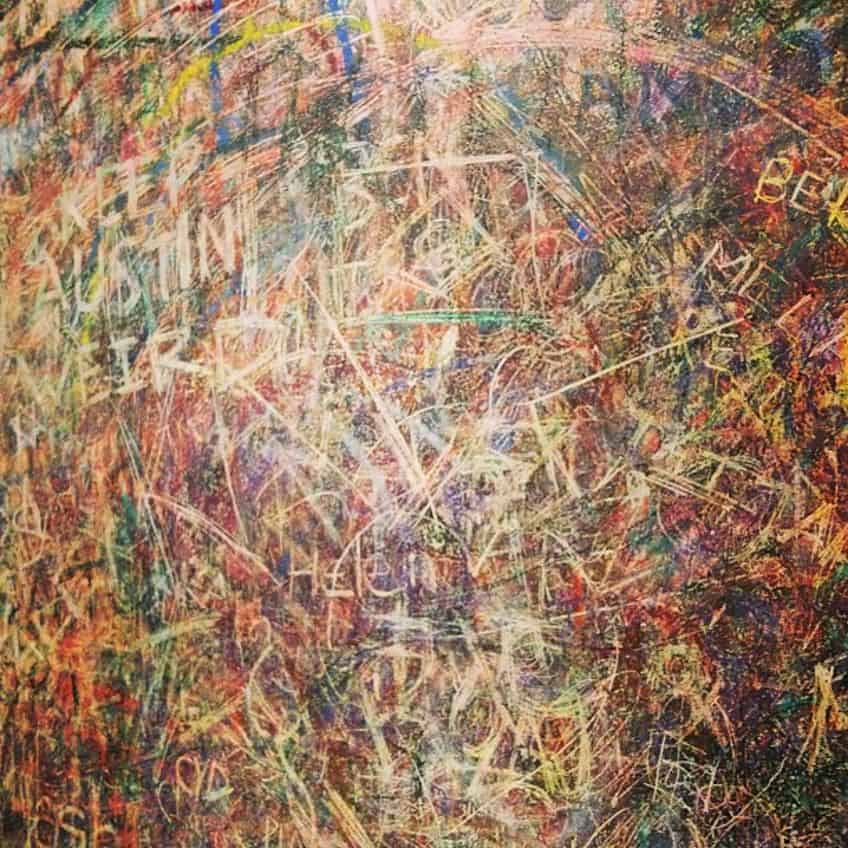
First Exhibition
The first Gutai exhibition took place in 1955 in Tokyo. It was groundbreaking, featuring experimental works that included performance art, painting, and installations. The exhibition’s highlight was Kazuo Shiraga’s paintings created with his feet, and Saburō Murakami’s pieces involving torn paper. This event established Gutai as a key player in the art world. The audacity and creativity displayed attracted both local and international attention.
It marked the beginning of Gutai’s journey as an influential and innovative art group.
Evolution and Practices
The Gutai Art Association pioneered new forms of artistic expression, emphasizing the use of unconventional materials and the importance of individuality among its members. This innovation in techniques and materials made their exhibitions unique and influential in the art world.

Concepts and Styles
Gutai artists sought to break free from traditional art forms. They focused on the act of creation itself as a performance, emphasizing physical action. Kazuo Shiraga, for instance, painted with his feet, blending body movement with the painting process. Atsuko Tanaka was known for her Electric Dress, a wearable piece made of light bulbs and electrical wiring, highlighting the interplay between technology and art.
Members aimed to capture the raw energy and spirit of the post-war era. Their works often featured bold colors and dramatic gestures. Art was interactive and engaging, inviting viewers to experience it in new ways. The group’s pieces varied widely in style, showcasing their commitment to individual creativity over uniformity.
Innovative Techniques and Materials
Gutai artists utilized a mix of traditional and non-traditional materials in their work. Common materials included paint, mud, cement, and even industrial products. This approach allowed for a wide range of textures and forms, setting their art apart from conventional painting. Shiraga Kazuo’s use of feet to manipulate paint on large canvases introduced a dynamic and tactile approach to creating art.

Atsuko Tanaka’s work often incorporated everyday materials in unexpected ways, such as her use of flashing lights and wires to construct her famous Electric Dress. These techniques were not merely for shock value; they encouraged viewers to think about the relationship between art, technology, and daily life. Through their innovative use of materials and techniques, the Gutai Art Association challenged the established norms of art and expanded the possibilities of artistic expression. Their practices influenced many artists and movements that followed.
Notable Gutai Artists and Their Works
Many artists within the Gutai Art Association left lasting impacts with their innovative and experimental works. This section focuses on significant Gutai exhibitions, notable locations, and famous venues that showcased their art. Several significant artists emerged from the Gutai Art Association, leaving an indelible mark on the art world. Kazuo Shiraga’s dynamic “foot painting” performances, where he used his feet to paint while suspended from the ceiling, challenged conventional notions of artistic technique.
Atsuko Tanaka’s vibrant and interactive installations, such as Electric Dress, fused art with technology, embodying the spirit of innovation central to Gutai. Shozo Shimamoto’s daring Bottle Crash performances, where he smashed bottles of paint onto canvases, exemplified Gutai’s emphasis on spontaneous creation and the physicality of artistic expression.
Significant Exhibitions and Locations
The initial public exhibitions by the Gutai group in the mid-1950s gained significant attention. The Experimental Outdoor Exhibition of Modern Art to Challenge the Mid-Summer Burning Sun in 1955, set in Ashiya Park, featured works designed to interact with natural elements. The 1956 First Gutai Art Exhibition held in Tokyo was another landmark, displaying diverse artworks that pushed the boundaries of traditional art forms.

Key Venues for Gutai Exhibitions
- Ashiya Park: This site hosted the group’s first outdoor exhibition in 1955. The choice of an outdoor setting was groundbreaking and emphasized Gutai’s embrace of natural and spontaneous elements.
- Tokyo Metropolitan Art Museum: The museum hosted the first official Gutai Art Exhibition in 1956. This venue provided a more conventional space for art enthusiasts and critics to engage with Gutai’s avant-garde pieces.
- The Guggenheim Museum: In 2013, the Guggenheim held a retrospective exhibition titled Gutai: Splendid Playground, which featured works by 17 members of the group. The retrospective highlighted the enduring influence of Gutai on global art history.
These locations and events played crucial roles in establishing the Gutai Art Association as a leading force in post-war avant-garde art.
Gutai in a Global Context
The Gutai Art Association made a significant impact on the international art scene, gaining recognition and influencing contemporary art through innovative practices and collaborations.

International Recognition and Impact
The Gutai Group first garnered international attention through exhibitions and the publication of their Gutai Journal. Their participation in the International Sky Festival in 1960 was particularly notable. Through large-scale, interactive installations, they pushed the boundaries of traditional art forms. Gutai artists also formed connections with prominent figures like Lucio Fontana, an Italian artist known for his spatial concepts. This relationship emphasized their interest in merging technology with art. Art historians and critics, such as Alexandra Munroe, have highlighted their daring approaches.
The group’s contributions were showcased in international venues, including the Jeu de Paume in Paris, cementing their global stature.
Gutai’s Legacy and Influence on Contemporary Art
Gutai’s influence extended beyond their active years, continuing to shape contemporary art. Their focus on avant-garde ideas and conceptual art practices inspired future generations of artists. The group’s legacy is evident in modern interactive and performance art.

Retrospective exhibitions, like the 2013 show titled Gutai: Splendid Playground at the Solomon R. Guggenheim Museum, underscored their ongoing relevance. These exhibitions allowed new audiences to experience Gutai’s innovations. Critics and scholars recognize Gutai’s pioneering use of materials and techniques that merged art and technology. Gutai’s experimental spirit remains a driving force in contemporary art, bridging the gap between traditional practices and modern explorations.
The Gutai Art Association remains a beacon of innovation and experimentation in the annals of art history. Through their relentless pursuit of new forms of expression and their bold exploration of the intersection between art and life, Gutai artists shattered traditional conventions and paved the way for future generations of avant-garde creators. Their legacy continues to inspire contemporary artists worldwide, reminding us of the boundless possibilities inherent in the artistic journey and the enduring power of radical creativity.
Frequently Asked Questions
What Were the Defining Characteristics of the Gutai Art Movement?
The Gutai Art movement was characterized by its break from traditional art forms and emphasis on experimental and performative art. They valued freedom of expression, often using unconventional materials and techniques. The group’s works included large-scale outdoor performances, interactive installations, and abstract paintings that emphasized the physical act of creation.
Who Were the Key Figures in the Gutai Art Association?
The Gutai Art Association was founded by Jirō Yoshihara in 1954. Yoshihara was a central figure who inspired many other artists in the group. Prominent members included Kazuo Shiraga, known for painting with his feet, and Atsuko Tanaka, famous for her Electric Dress made of light bulbs and wires. These artists’ innovative practices helped shape the movement’s identity.
What Is the Significance of the Gutai Art Manifesto?
The Gutai Art Manifesto, published by Jirō Yoshihara, outlined the principles and goals of the Gutai group. It emphasized originality, the importance of individual expression, and the rejection of traditional artistic boundaries. The manifesto encouraged artists to create works that fully embodied the spirit of freedom and creativity, marking a clear departure from conventional Japanese art.
How Did the Gutai Group Influence Subsequent Art Movements?
The Gutai group’s emphasis on freedom, experimentation, and breaking traditional boundaries had a lasting impact on subsequent art movements. Their innovative use of materials and performance art influenced the international art scene and paved the way for future avant-garde and contemporary artists. The group’s legacy continues to inspire artists to explore new and unconventional methods of artistic expression.
Isabella studied at the University of Cape Town in South Africa and graduated with a Bachelor of Arts majoring in English Literature & Language and Psychology. Throughout her undergraduate years, she took Art History as an additional subject and absolutely loved it. Building on from her art history knowledge that began in high school, art has always been a particular area of fascination for her. From learning about artworks previously unknown to her, or sharpening her existing understanding of specific works, the ability to continue learning within this interesting sphere excites her greatly.
Her focal points of interest in art history encompass profiling specific artists and art movements, as it is these areas where she is able to really dig deep into the rich narrative of the art world. Additionally, she particularly enjoys exploring the different artistic styles of the 20th century, as well as the important impact that female artists have had on the development of art history.
Learn more about Isabella Meyer and the Art in Context Team.
Cite this Article
Isabella, Meyer, “Gutai Art Association – Avant-Garde Japanese Creatives.” Art in Context. July 17, 2024. URL: https://artincontext.org/gutai-art-association/
Meyer, I. (2024, 17 July). Gutai Art Association – Avant-Garde Japanese Creatives. Art in Context. https://artincontext.org/gutai-art-association/
Meyer, Isabella. “Gutai Art Association – Avant-Garde Japanese Creatives.” Art in Context, July 17, 2024. https://artincontext.org/gutai-art-association/.




